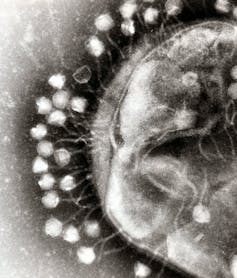Minister for the Environment and Water, Tanya Plibersek MP, has announced a variety of new projects to monitor the condition of the Murray-Darling Basin.
15 social, economic, environmental, cultural and hydrology projects will form part of the Basin Condition Monitoring Program.
These programs include:
- Trialling environmental DNA technology that can tell us what fish, frogs and other animals have been active in the water, even if they’re not currently present – working with local citizens to collect water samples. This helps to track changes in biodiversity over time.
- Collecting oral histories that will capture the changes in the Basin experienced by long-term community members over time, ensuring their experiences are incorporated into future plans.
- Working with several First Nations groups to identify cultural flow requirements in the Basin.
- Building a better understanding of the economic contribution of a variety of industries including tourism & recreation and floodplain grazing.
No one knows the Murray-Darling Basin better than the people who live there. That’s why this program brings these people together to contribute their knowledge.
These projects will provide government with information it needs to work to deliver a healthy river system – for communities, for industry, for First Nations and for the environment. They will also ensure that climate change impacts are being effectively monitored.
The 2021 State of the Environment Report has shown us just how critical it is to build a strong evidence-base if we are to turn around the health of our rivers.
The $7.5 million Basin Condition Monitoring Program has been designed by the MDBA using a community-led process, to ensure local knowledge and experience remains front and centre.
The Authority is working directly with several First Nations groups on the design, implementation and interpretation of cultural projects.
The outcomes and findings from the projects will help inform the 2025 Basin Plan Evaluation and the 2026 Basin Plan Review.
To read the project plan visit:
Quotes from Tanya Plibersek MP, Minister for the Environment and Water:
“No one knows their part of the river better than Basin communities and we must do better at understanding and using their experiences to plan for the future. That’s why it’s so important to have oral history projects sitting alongside science projects, capturing the changes in the Basin experienced by long-term community members over time,” Minister Plibersek said.
“In particular, that means listening and learning from the lessons of First Nations people.”
“I’m very passionate about the program’s inclusion of citizen science which will improve our understanding about the distribution of animal species.
“New environmental DNA technology is particularly exciting as it can tell us what fish, frogs and other animals have been active recently in the water, even if they’re not currently present – information that other more conventional survey methods might miss.
“The Basin Condition Monitoring Program will give us a more in-depth view of the condition of the Basin so we can better analyse the system’s health, including the state of threatened species in the Basin.
“We need to ensure that we are effectively taking account of the climate change impacts that we are already seeing. This will better enable us to set up the Basin Plan for the future.”







